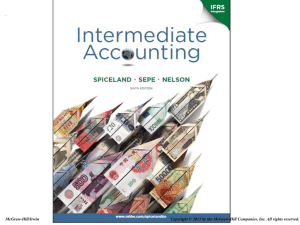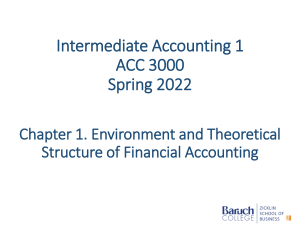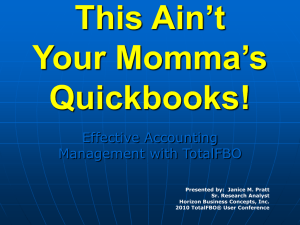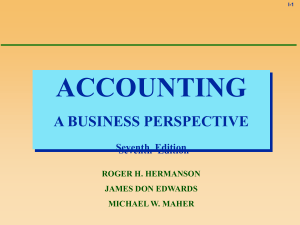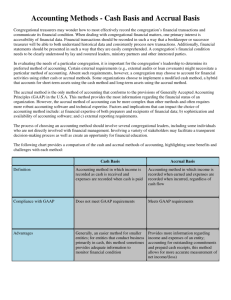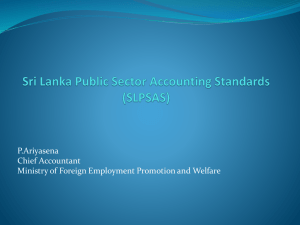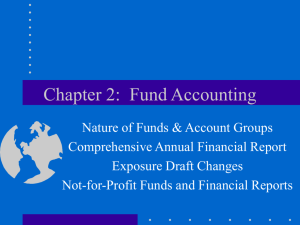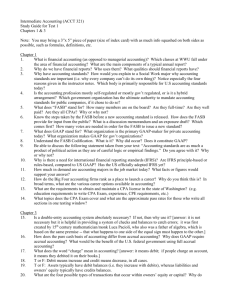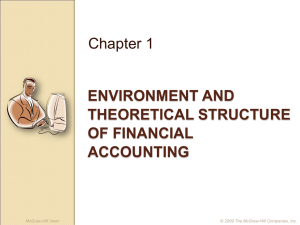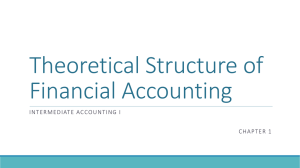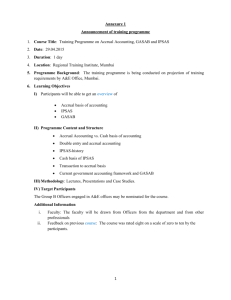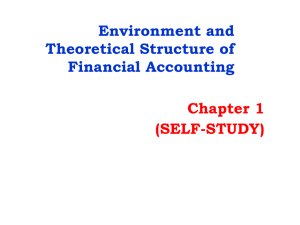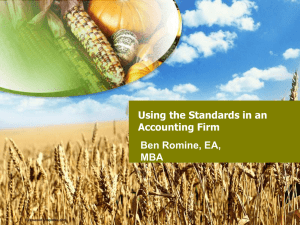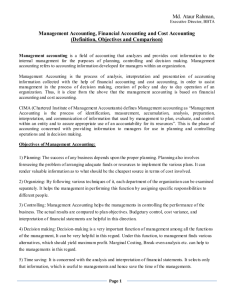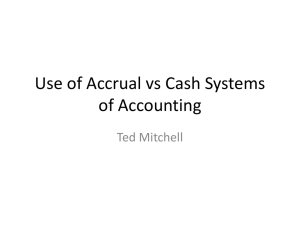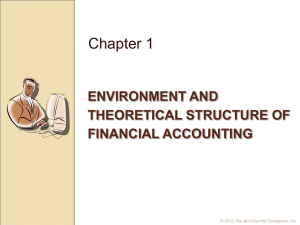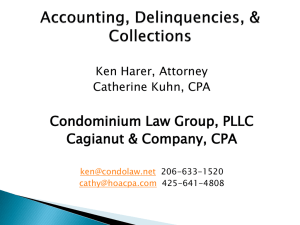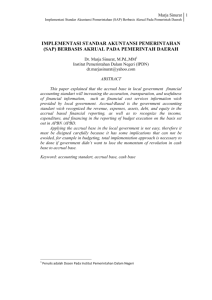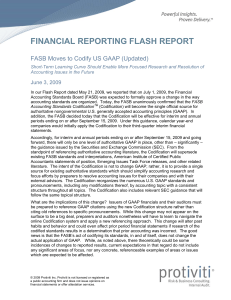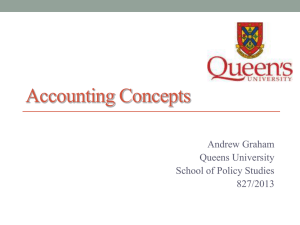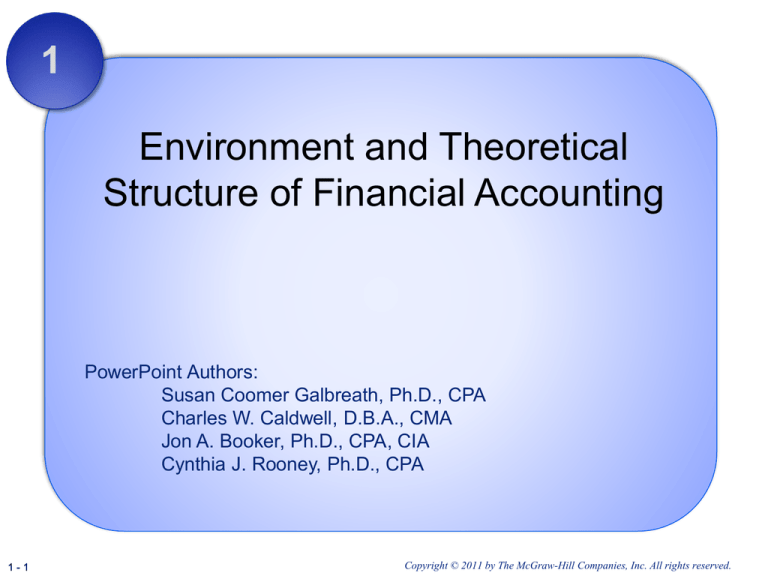
1
Environment and Theoretical
Structure of Financial Accounting
PowerPoint Authors:
Susan Coomer Galbreath, Ph.D., CPA
Charles W. Caldwell, D.B.A., CMA
Jon A. Booker, Ph.D., CPA, CIA
Cynthia J. Rooney, Ph.D., CPA
1-1
Copyright © 2011 by The McGraw-Hill Companies, Inc. All rights reserved.
Financial Accounting Environment
Providers of
Financial
Information
Profit-oriented
companies
Not-for-profit
entities
Households
1-2
External
User Groups
Relevant
Financial
Information
Investors
Creditors
Employees
Labor unions
Customers
Suppliers
Government
agencies
Financial
intermediaries
Financial Accounting Environment
Relevant financial information is provided
primarily through financial statements and
related disclosure notes.
1-3
Balance Sheet
Income Statement
Statement of Cash Flows
Statement of Shareholders’ Equity
The Economic Environment
and Financial Reporting
A sole proprietorship
is owned by a
single individual.
A partnership is
owned by two or
more individuals.
A corporation is owned
by shareholders.
1-4
A highly-developed
system communicates
financial information
from a corporation to its
many shareholders.
Investment-Credit Decisions ─ A Cash
Flow Perspective
Shareholders
Receive
Cash
1. Dividends
2. Sale of Stock
Creditors
Receive
Cash
1. Interest
2. Loan Repayment
Accounting information should help investors
and creditors evaluate the amount, timing,
and uncertainty of the enterprise’s future
cash flows.
1-5
Cash versus Accrual Accounting
Cash Basis Accounting
Revenue is recognized when cash is received.
Expenses are recognized when cash is paid.
O
R
O
OR
R
O
R
Accrual Accounting
Revenue is recognized when earned.
Expenses are recognized when incurred.
1-6
Cash versus Accrual Accounting
Cash Basis Accounting
Carter Company has sales on account totaling
$100,000 per year for three years. Carter collected
$50,000 in the first year and $125,000 in the second
and third years. The company prepaid $60,000 for
three years’ rent in the first year. Utilities are $10,000
per year, but in the first year only $5,000 was paid.
Payments to employees are $50,000 per year.
Let’s look at the cash flows.
1-7
Cash versus Accrual Accounting
Cash Basis Accounting
Sales (on credit)
Year 1
$ 100,000
Cash receipts from
customers
$
Payment of 3
years' rent
50,000
(60,000)
Summary of Cash Flows
Year 2
Year 3
$ 100,000
$ 100,000
Total
$ 300,000
$ 125,000
$ 300,000
-
$ 125,000
-
Salaries to Cash flows in any one year may not
employees
(50,000)
(50,000)
(50,000)
be a predictor of future cash flows.
Payments for
utilities
Net cash flow
1-8
(5,000)
$ (65,000)
(15,000)
$ 60,000
(10,000)
$ 65,000
(60,000)
(150,000)
(30,000)
$ 60,000
Cash versus Accrual Accounting
Accrual Basis Accounting
Year 1
Revenue
$ 100,000
Summary of Operations
Year 2
Year 3
$ 100,000
$ 100,000
Total
$ 300,000
Rent Expense
(20,000)
(20,000)
(20,000)
(60,000)
Salaries Expense
(50,000)
(50,000)
(50,000)
(150,000)
Net Income is considered a better indicator
Utilities Expense
(10,000)
(10,000)
of future cash
flows. (10,000)
Net Income
1-9
$
20,000
$
20,000
$
20,000
$
(30,000)
60,000
The Development of Financial
Accounting and Reporting Standards
Concepts,
principles, and
procedures were
developed to meet the
needs of external
users (GAAP).
1 - 10
Historical Perspective and Standards
1 - 11
Current Standard Setting
Financial Accounting
Standards Board
• Supported by the Financial Accounting
Foundation
• Five full-time, independent voting members
• Answerable only to the Financial Accounting
Foundation
• Members not required to be CPAs
1 - 12
FASB Accounting Standards
Codification
The objective of the codification project was to integrate and
organize by topics all relevant accounting pronouncements
into a searchable, online database.
1 - 13
Establishment of Accounting Standards
A Political Process
Internal Revenue
Service
www.irs.gov
Financial Executives
International
www.fei.org
American Institute
of CPAs
www.aicpa.org
GAAP
International
Accounting
Standards Board
www.iasb.org
Securities and
Exchange
Commission
www.sec.gov
1 - 14
Governmental
Accounting
Standards Board
www.gasb.org
American
Accounting
Association
www.aaa-edu.org
FASB’s Standard-Setting Process
Board receives recommendations for projects.
Board votes to add the project to its agenda .
Board deliberates the issues at a series of public
meetings.
Board issues an Exposure Draft (ED).
Board holds a public roundtable meeting on the ED.
Staff analyzes feedback and the Board re-deliberates
the proposed revisions at public meetings .
Board issues a Standards Update describing
amendments to the Codification.
1 - 15
Toward Global Accounting Standards
The main objective of the International
Accounting Standards Board (IASB) is to
develop a single set of high quality,
understandable and enforceable global
accounting standards to help participants in
the world’s capital markets and other users
make economic decisions.
1 - 16
Role of the Auditor
Auditors serve as independent
intermediaries to help insure that
management has appropriately applied
GAAP in preparing the company’s
financial statements.
1 - 17
Financial Reporting Reform
As a result of numerous financial scandals,
Congress passed the Public Company
Accounting Reform and Investor Protection
Act of 2002, (Sarbanes-Oxley Act). The goal
was to restore credibility and investor
confidence in the financial reporting process.
1 - 18
A Move Away from
Rules-Based Standards?
• Rules based accounting standards vs.
objectives-oriented approach
• Objectives oriented (principles-based)
approach stressed professional
judgment
1 - 19
Ethics in Accounting
• For financial information to be useful, it
should possess the fundamental decisionspecific qualities of relevance and faithful
representation.
• Management may be under pressure to
report desired results and ignore or bend
existing rules.
1 - 20
Underlying Assumptions and
Accounting Principles
1 - 21
Evolution of Accounting Principles
The Move Toward Fair Value
Fair value is the price that would be received
to sell assets or paid to transfer a liability in
an orderly transaction between market
participants at the measurement date.
Market
Approaches
Income
Approaches
Cost
Approaches
1 - 22
Fair Value Hierarchy
GAAP gives companies the option to report some or all of
their financial assets and liabilities at fair value.
1 - 23

